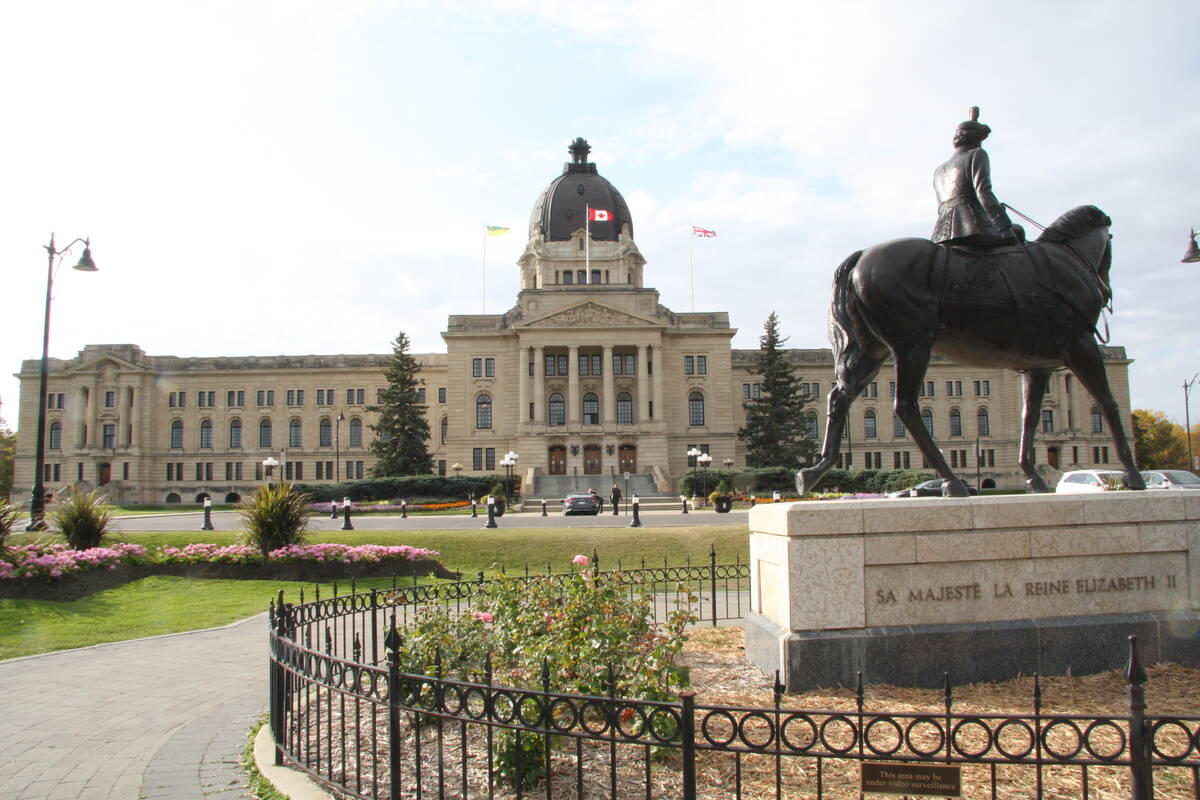Alberta health and education officials say millions added to those provincial budgets may not amount to much this year.
“We’re hoping to sustain our current level of services but I’m not sure we’ll be able to do much beyond that. I think that you would find across the province that every region was in the same situation,” said Mike Campbell of Crossroads Regional Health Authority, which includes the Drayton Valley area.
For its 1999-2000 fiscal year the government injected an extra $386 million into the provincial health budget, bringing it to $4.85 billion.
Read Also

Saskatchewan throne speech promises strong economy
Saskatchewan’s legislative agenda for the coming year will focus on meeting the challenges of new world trading relationships, said the speech from the throne.
However, negotiations with the United Nurses of Alberta and other unionized employees are ongoing and wage increases could eat up the extra $2.4 million his district is receiving, said Campbell.
“That’s a concern. If we end up doing that then we’re not actually going to have any additional staffing,” said Dr. Rowland Nichol, president of the Alberta Medical Association.
However, he noted wage increases are important to keep staff in Alberta.
“It’s kind of a balance between the fact that we do need to pay them a reasonable wage but at the same time we need to have extra dollars to provide better care.”
The budget said 1,000 additional front-line workers will be hired but that will likely be up to regional health authorities to decide, said Nichol.
“It’s usually an optimistic projection that it might be possible to hire up to that many people but I don’t think that it always turns out that way.
“We certainly do need extra front-line workers in terms of nurses and other health-care professionals but we have to wait and see what happens.”
He thinks rural patients will likely benefit from the $1 million slated for telehealth, a program that allows city specialists to analyze patients’ X-rays or other health records from a distance.
Some rural hospitals have been eliminated but the regions need to offer more extended home care and rehabilitative services in the community, said Nichol. As well, technology must keep pace in rural hospitals to attract Canadian doctors.
“My main thrust is that this is a stabilization year and people may not notice a great deal of improvements. The pressure needs to be placed directly on the government to make sure the planning takes place so we can improve things for the second and third year.”
With ongoing teachers’ settlements, education officials are seeing some of the same trends as those in the health sector.
More of the same
“This budget is really a status quo budget,” said Warren Phillips, chief deputy superintendent of schools for the Battle River school division that includes the Camrose area.
“We will not be able to put more teachers in our classroom because of this budget.”
Overall, the provincial education budget increased $222 million to $3.36 billion. The basic per student instruction grant increased by $116 to $3,976 this year. The budget also allotted $70 million for a three percent increase in basic instruction and other grants.
Phillips appreciates that the money was mostly applied generally instead of going to specific funds: “It came with no strings attached so the board can decide how to best allocate those resources.”
However, schools in his district face declining enrolments and he would have liked more support for that problem. As well, he’s not embracing a $66 million incentive program, to start in September, that will reward school boards that achieve certain targets.
The province says schools that voluntarily apply could get bonus money if students improve in areas like test results and attendance rates. Each school’s achievements will be compared to scores from the previous three years for the bonus money that boards could spend in any area.
“Our teachers do do a good job and I’m not sure this incentive will cause them to do a better job,” said Phillips.
Bauni Mackay, president of the Alberta Teacher’s Association, agrees and thinks the money should have been put into other areas.
“This way we’re going to have to play games to get the money. How much more money can you get out of a person if you dangle a carrot in front of them?”
But overall, she thinks increasing funding is a good start.
“It’s good news. It’s not jump-up-and-down news but we’re moving in the right direction.”














